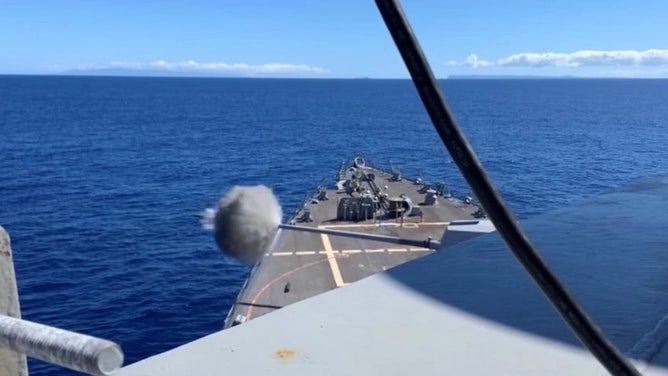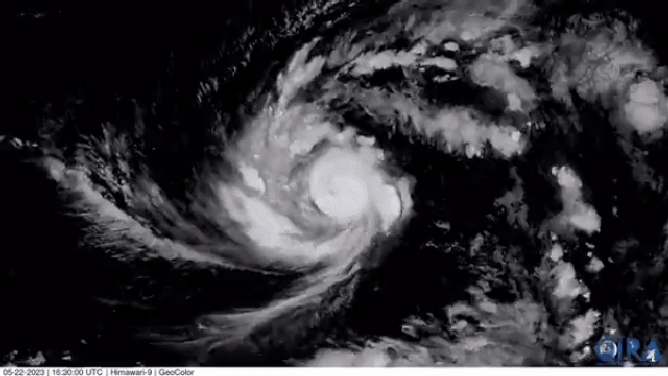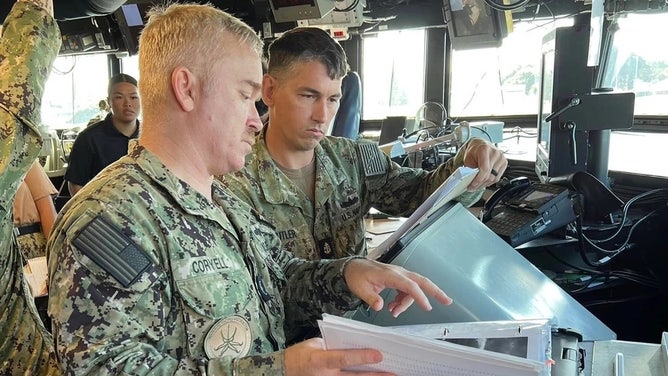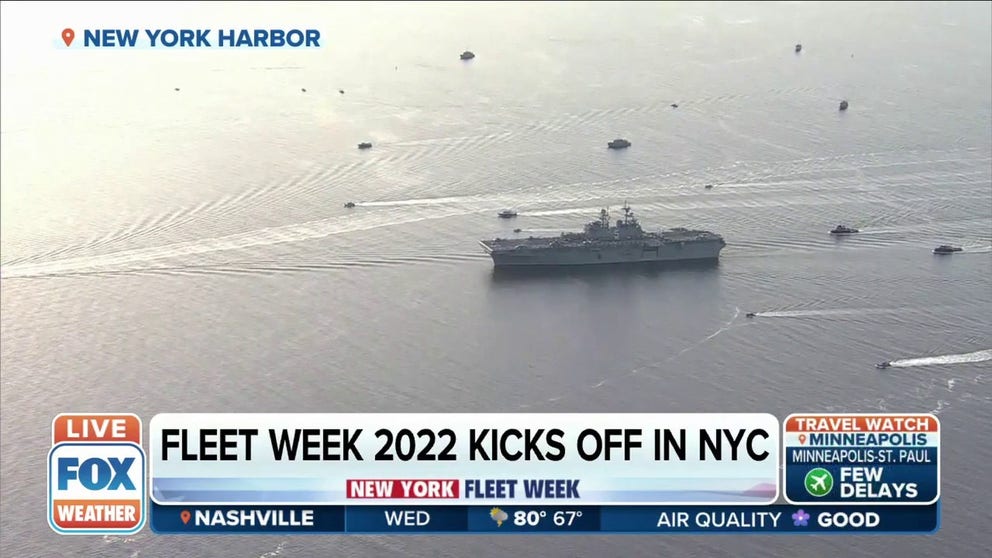How the Joint Typhoon Warning Center prepares fleets for typhoons
The joint operation includes a team of 50 civilians and members of the Navy, Air Force and Marines.
FOX Weather sails with U.S. Navy for Fleet Week in NYC
FOX Weather meteorologist Craig Herrera went sailing with the U.S. Navy on the USS Bataan as part of Fleet Week in NYC and learned how the weather plays a vital role in keeping their ships safe.
As hurricane season rears its ugly head, the safety of our men and women in uniform out at sea becomes even more of a concern.
To help protect our military and residents abroad, the Joint Typhoon Warning Center provides critical information about some of the most powerful storms on the planet – typhoons and cyclones that develop over the Indian and western Pacific Oceans.
The joint operation includes a team of 50 civilians and members of the U.S. Navy, Air Force and Marine Corps.

PEARL HARBOR, HI (13 November 2019) - Aerographer's Mate Third Class (AG3) Kain Enright of the Joint Typhoon Warning Center (JTWC) embarked on the USS Halsey (DDG 97) for a one week underway.
(LT Caitlin Fine / DVIDS / FOX Weather)
"We monitor everything from the east coast of Africa to the west coast of the Americas," said Brian Strahl, the director of the JTWC in Pearl Harbor, Hawaii. "So, we estimate that's about roughly 65 million square miles of waters where tropical cyclones are known to occur."
5 DIFFERENT NAMES FOR HURRICANES AROUND THE WORLD
Strahl said weather forecasters at the JTWC use a variety of sources, such as the National Weather Service, international partners and satellite-based reconnaissance, to shape their forecasts for such a broad region.

New satellite images show powerful Super Typhoon Mawar approaching the U.S. island territory of Guam.
(NOAA/CIRA / FOX Weather)
Part of the U.S. Navy’s Meteorology and Oceanography Command, the JTWC tracks tropical cyclone development in this region and then communicates their findings to agencies within the Navy and throughout other branches within the Department of Defense.
Knowing where storm systems are going to move allows agencies to make decisions about whether aircraft may need to be evacuated, where a fleet should be moved to stay out of harm’s way, which ports may need to take shelter and how humanitarian efforts may be impacted.

PEARL HARBOR, Hawaii (Nov. 21, 2022) - Sailors from Joint Typhoon Warning Center (JTWC) conducted fleet liaison observation training with Quatermasters (QM) and Aerographer’s Mates (AG) onboard the USS DANIEL K. INOUYE (DDG 118).
(94th Airlift Wing / JTWC / FOX Weather)
The U.S. Navy alone has nearly 300 deployable ships around the globe. According to Strahl, some of the information the JTWC provides includes where the seas are the strongest and where waves are rising 12 feet or more. With that information, the Navy may choose to keep their ships away from that area.
As far as the Air Force is concerned, some information from the JTWC about the strength of crosswinds on a runway may prevent their planes from taking off. For the ground-based Marine Corps, information from the JTWC may be regarding storm surge and flooding that may affect their missions.
